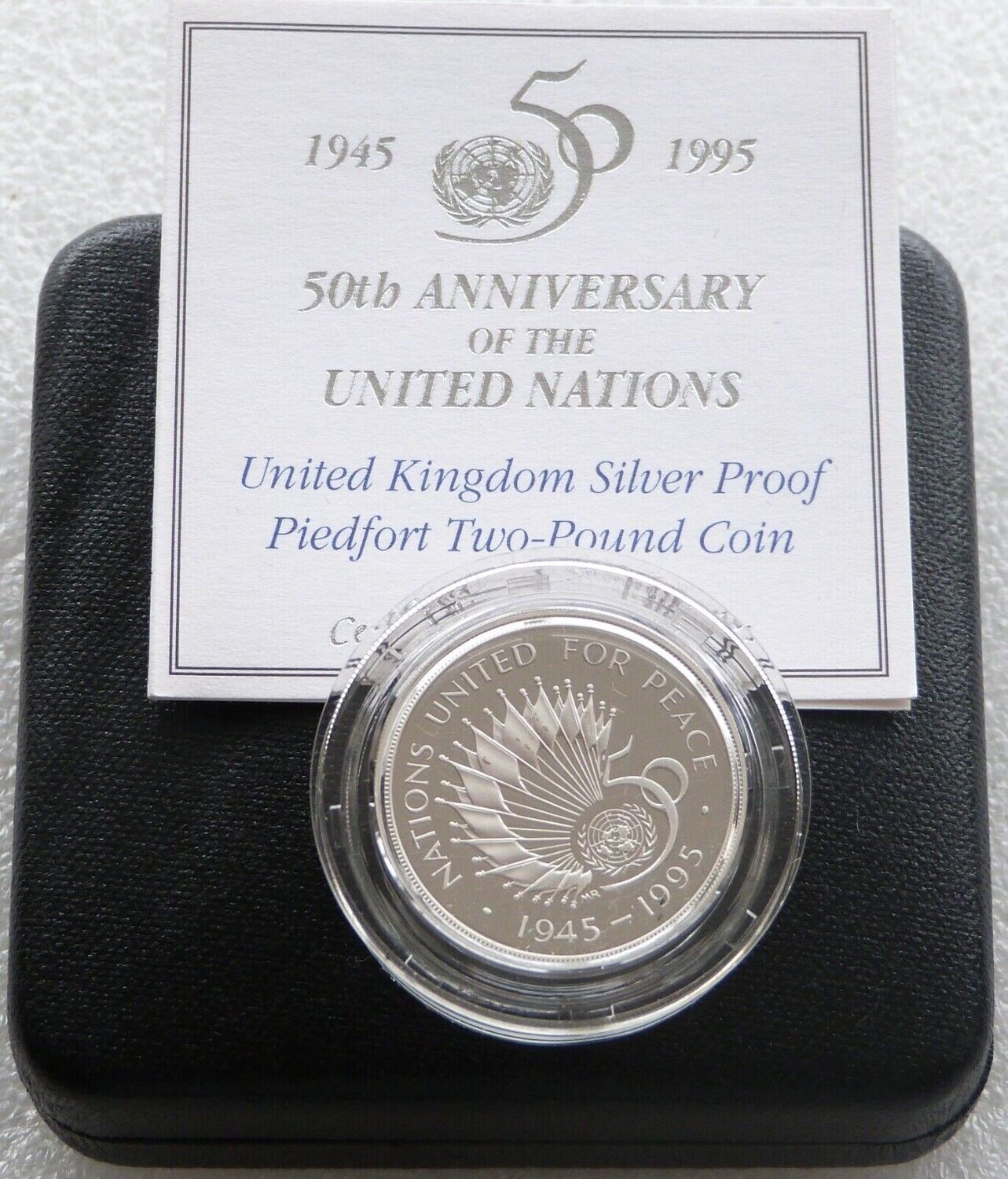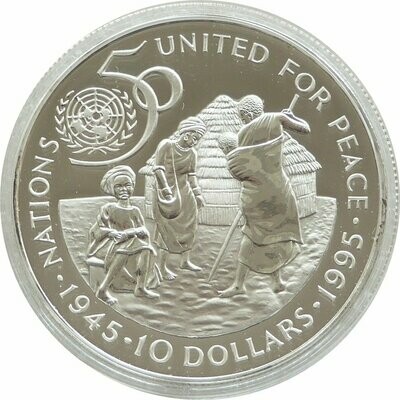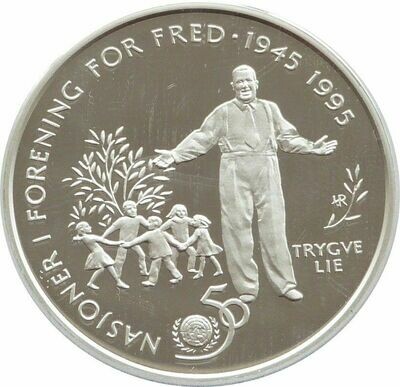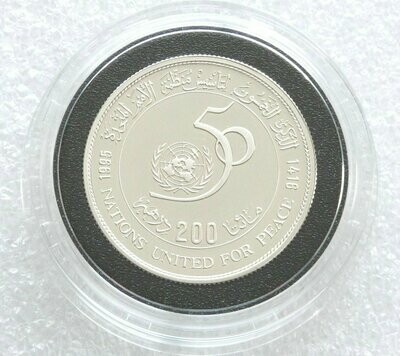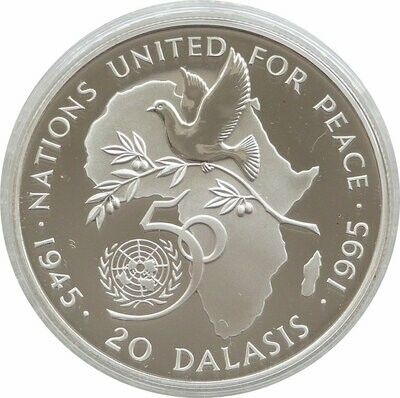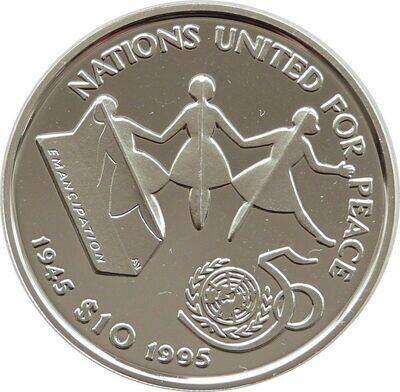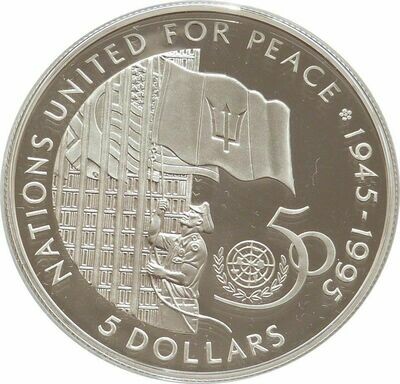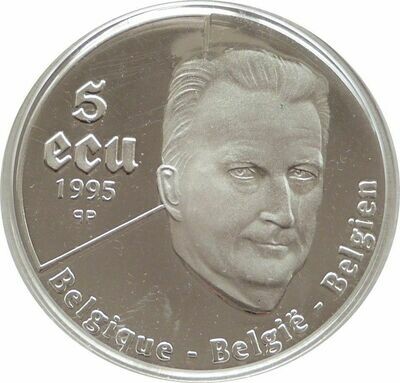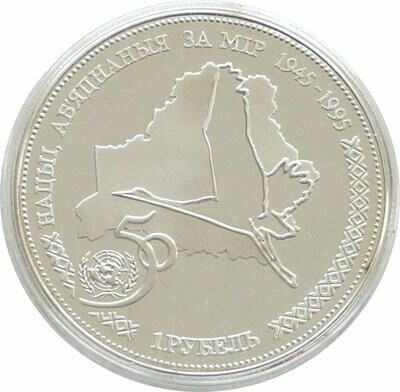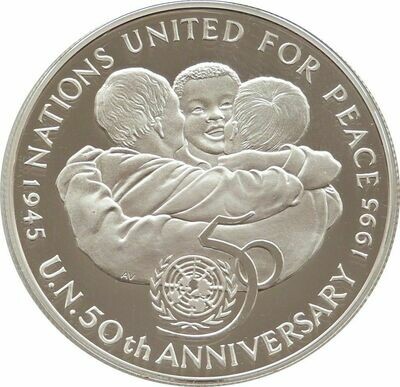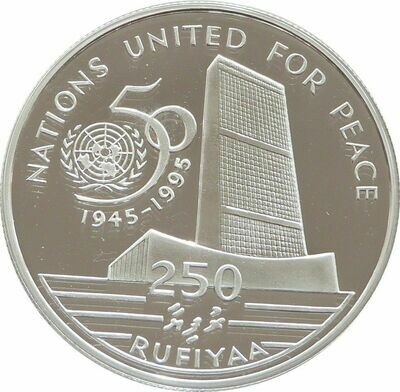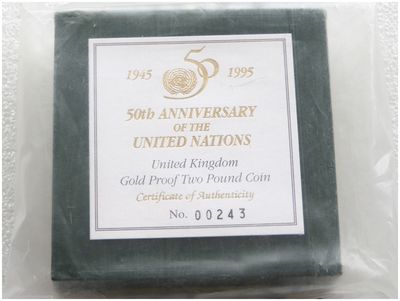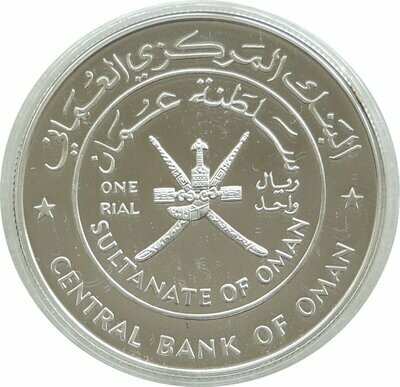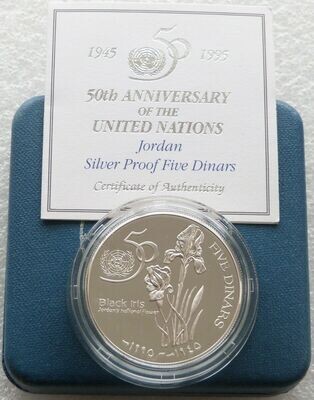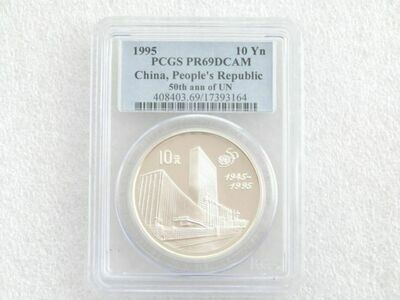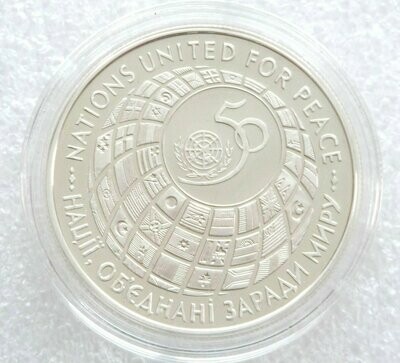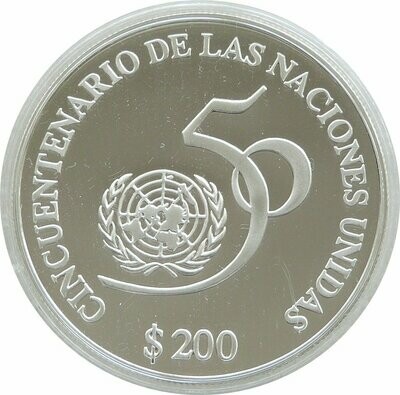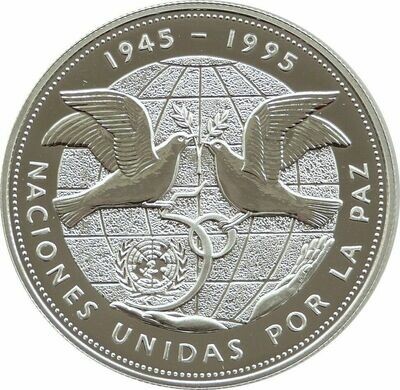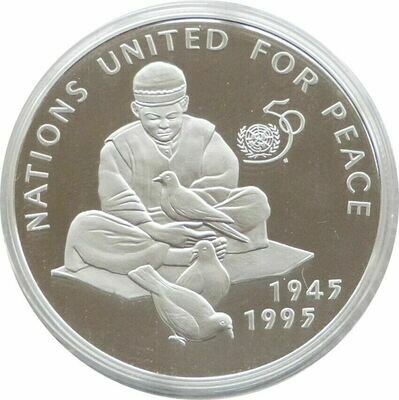1995 United Nations Piedfort £2 Silver Proof Coin Box Coa
In 1995, to celebrate the 50th Anniversary of the United Nations, the Royal Mint released a Limited Issue United Nations Piedfort £2 Two Pound Silver Proof Coin struck in solid .925 Sterling Silver.
The United Nations was established in the aftermath of a devastating war, created to maintain world peace and security and to work for social progress. It finds its roots in the Atlantic Charter which, after a series of meetings in warships off the coast of Newfoundland, was drawn up in 1941 by US President Franklin D Roosevelt and British Prime Minister Winston Churchill.
In search of peace, the Charter called for the fullest collaboration between all nations. In June 1945 some fifty nations meeting in San Francisco approved the United Nations Charter and on 24 October, now annually celebrated as United Nations Day, the Charter was ratified and brought into effect.
Fifty years later, in 1995, the United Nations celebrates a history of remarkable achievement and the beginning of a new era requiring the continuing co-operation of each and every nation.
The United Kingdom, one of the original members, celebrates the milestone with a magnificent solid .925 Sterling Silver Proof Piedfort £2 Two Pound Coin.
The reverse design has been created by the distinguished, sculptor Michael Rizzello who saw military service during and after the Second World War and therefore has personal experience of a world at war.
Of his design for the historic United Nations 50th Anniversary £2 Two Pound Coin, he says 'the flags clustered around the 50th Anniversary emblem are purely symbolic and I deliberately avoided any reference to a number, individual Member States or their perceived importance: simply, nations uniting around and into the United Nations.
The obverse bears the portrait of Queen Elizabeth II by Raphael Maklouf.
These legal tender coins have been struck to proof quality using specially prepared dies and highly polished blanks.
Piedforts are coins which have been specially struck on thicker than normal blanks.
As their name suggests they are closely associated with France, where from the twelfth century they were apparently issued by the Kings as presentation pieces.
In Britain the practice of striking piedforts is later and less frequent, but medieval and Tudor examples are known.
- Limited Mintage 10,000 Worldwide
- Piedfort Double the Thickness and Weight of it's Standard Counterpart
- Finished to Royal Mint's Proof Quality in Solid .925 Sterling Silver
- Celebrating the 50th Anniversary of the United Nations
- Royal Mint Boxed with Certificate of Authenticity
